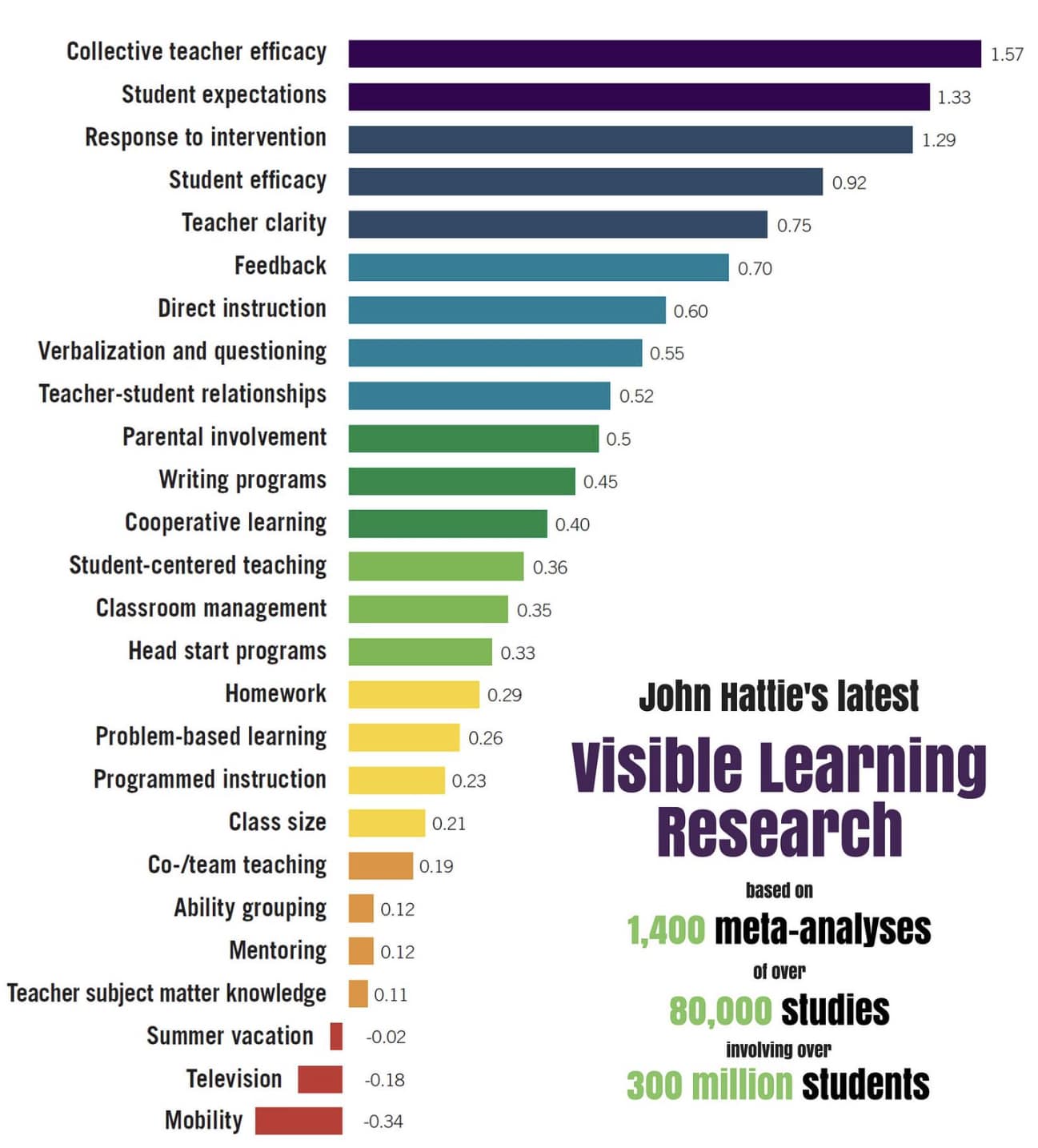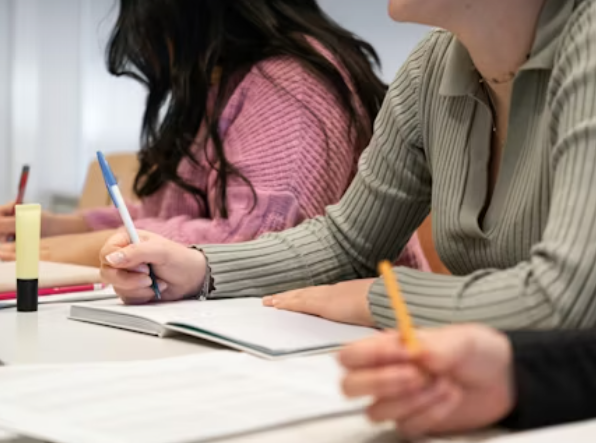
John Hattie’s Visible Learning research has become one of the most influential guides for evidence-based teaching. By synthesizing over 1,400 meta-analyses on student achievement, Hattie ranked teaching practices according to their “effect size”, a measure of how strongly they impact learning. You can find the summary of Hattie’s research here, by the way. The result is a practical roadmap for educators who want to focus on what works rather than what merely sounds good.
But the big question remains: How do we turn this research into classroom practice? Below, I’ve highlighted ten of Hattie’s most effective strategies, along with examples of how teachers can put them into action.
1. Feedback (Effect Size: 0.70)
Feedback is one of the most powerful influences on learning. Effective feedback is not just “well done” but specific, timely, and focused on improvement.
In practice: Instead of saying, “Good paragraph,” a teacher might comment, “You’ve used evidence well, now try linking it back to your thesis to strengthen your argument.”
2. Teacher Clarity (0.75)
Students learn best when they clearly understand what success looks like.
In practice: Begin each lesson with clear learning intentions and success criteria. For example: “Today we are learning how to multiply fractions. By the end, you should be able to solve at least three problems and explain your method to a partner.”
3. Reciprocal Teaching (0.74)
This collaborative strategy teaches students to guide each other through four steps: predicting, questioning, clarifying, and summarizing.
In practice: During a reading activity, assign small groups to take turns leading discussions, making thinking visible for everyone.
4. Classroom Discussion (0.82)
Rich, purposeful discussion helps students process and deepen their understanding.
In practice: Replace rapid-fire questioning with open prompts like, “Why do you think the author made that choice?” and allow students to build on each other’s answers.
5. Spaced Practice (0.65)
Students retain information better when practice is distributed over time rather than crammed.
In practice: Revisit key concepts weeks after initial teaching through quick quizzes or review games to strengthen memory.
6. Metacognitive Strategies (0.69)
Encouraging students to think about their own thinking helps them become self-regulated learners.
In practice: Use prompts such as, “What strategy did you use to solve that problem?” or have students keep reflection journals after assignments.
7. Direct Instruction (0.59)
Often misunderstood, Hattie emphasizes that direct instruction is effective when it’s explicit, structured, and followed by practice—not rote lecturing.
In practice: Model a problem step-by-step, then gradually release responsibility to students through guided and independent practice.
8. Formative Evaluation (0.90)
Assessing learning as it happens allows teachers to adjust instruction in real time.
In practice: Use mini whiteboards, exit tickets, or quick polls to gauge understanding and adapt lessons accordingly.
9. Collective Teacher Efficacy (1.57)
The belief that teachers, working together, can positively impact achievement is the single most powerful influence Hattie identified.
In practice: Foster a culture of collaboration where teachers share strategies, analyze data, and problem-solve together. When teachers believe in their joint ability, student outcomes improve.
10. Student-Teacher Relationships (0.52)
Strong relationships are the foundation of all effective teaching.
In practice: Learn students’ names quickly, show genuine interest in their lives, and create an environment of respect. When students feel valued, they are more motivated to learn.
Bringing It All Together
Hattie’s research is a reminder that teaching is both an art and a science. The art lies in knowing your students: their needs, strengths, and interests. The science lies in drawing on strategies proven to have the biggest impact. When these two intersect, learning becomes visible, powerful, and lasting.
If you’re looking to start small, choose one or two strategies from this list and embed them consistently into your practice. Over time, these evidence-based approaches can transform classroom learning for both students and teachers.




